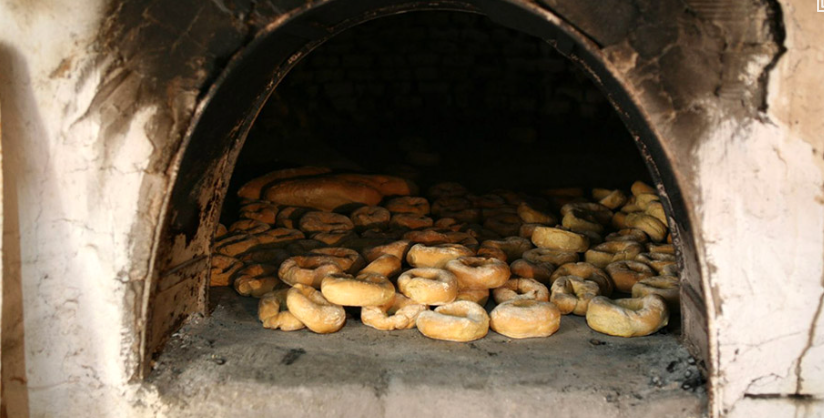Crete, the largest of the Greek islands, is renowned for its rich history, stunning landscapes, and vibrant culture. Among its many treasures, traditional bakeries stand out as aromatic havens that offer a sensory journey into the heart of Cretan culinary heritage. These bakeries, often family-owned and deeply rooted in tradition, produce a variety of baked goods that are integral to the island’s gastronomic identity. This text explores the history, significance, and delectable offerings of traditional Cretan bakeries, celebrating their role in preserving and promoting the island’s unique flavors.
The Historical Significance of Cretan Bakeries
The tradition of baking in Crete dates back thousands of years, with roots in the ancient Minoan civilization (circa 2600 to 1100 BC). Archaeological findings, including bread ovens and baking utensils, indicate that bread and other baked goods were central to the Minoan diet. Over the centuries, baking techniques and recipes evolved, influenced by various cultures, including the Romans, Byzantines, Venetians, and Ottomans.
Cretan bakeries have always been more than just places to buy bread; they are community hubs where locals gather, stories are shared, and traditions are passed down through generations. The art of baking is deeply intertwined with the island’s cultural and social fabric, reflecting the rhythms of daily life and seasonal celebrations.
The Charm of Traditional Cretan Bakeries
Traditional Cretan bakeries are characterized by their warm, welcoming atmosphere and the enticing aromas that waft through the air. These bakeries often feature wood-fired ovens, a hallmark of authentic Cretan baking, which impart a unique flavor and texture to the baked goods.
1. Wood-Fired Ovens: Many traditional bakeries in Crete still use wood-fired ovens, a practice that dates back centuries. These ovens, typically made from stone or brick, are heated with local wood, such as olive or pine. The intense, even heat of the wood fire ensures a perfect bake, producing bread with a crispy crust and a soft, airy interior.
2. Handmade Delicacies: The focus on handmade, artisanal methods is a key feature of traditional Cretan bakeries. From kneading dough by hand to shaping pastries with care, the craftsmanship involved in the baking process is evident in the quality and taste of the products. These bakeries pride themselves on using fresh, local ingredients, including Cretan olive oil, honey, herbs, and cheeses.
3. Community Connection: Traditional bakeries are often family-run businesses, with recipes and techniques passed down through generations. These bakeries play a vital role in the community, serving as gathering places where neighbors meet, exchange news, and enjoy the simple pleasures of freshly baked goods.
Delectable Offerings of Cretan Bakeries
The array of baked goods found in traditional Cretan bakeries is vast and varied, offering something for every palate. Some of the most beloved items include:
1. Bread: Bread is a staple of the Cretan diet, and traditional bakeries offer a variety of loaves, each with its unique flavor and texture. Daktyla (finger bread) is a popular choice, characterized by its elongated shape and sesame seed coating. Eptazymo (seven-fold bread) is another traditional bread, made with a blend of wheat and barley flours and naturally leavened with a sourdough starter.
2. Paximadia: These twice-baked rusks are a Cretan specialty, enjoyed as a snack or accompaniment to meals. Barley paximadia are particularly well-known, often served with tomatoes, olive oil, and cheese in the famous Cretan dish, dakos. Other varieties include wheat and olive oil paximadia, each with a distinct flavor and crunch.
3. Kalitsounia: Kalitsounia are small, sweet or savory pastries filled with various ingredients. Sweet kalitsounia are often filled with fresh myzithra cheese and flavored with cinnamon and honey, while savory versions may include wild greens, herbs, and cheese. These pastries are a popular treat during religious holidays and festivals.
4. Xerotigana: A traditional Cretan dessert, xerotigana are spiral-shaped pastries made from thin dough, deep-fried, and then drizzled with honey and sprinkled with sesame seeds. They are often served at weddings and special occasions, symbolizing good fortune and celebration.
5. Sfakianopita: Originating from the Sfakia region, sfakianopita is a unique type of pie made with thin dough filled with myzithra cheese and drizzled with honey. It is typically enjoyed warm, offering a delightful combination of sweet and savory flavors.
The Role of Bakeries in Preserving Tradition
Traditional Cretan bakeries play a crucial role in preserving and promoting the island’s culinary heritage. Through their commitment to artisanal methods and local ingredients, these bakeries ensure that the flavors and techniques of the past are kept alive for future generations to enjoy.
1. Education and Training: Many traditional bakeries offer apprenticeships and training programs, teaching young bakers the skills and knowledge needed to continue the craft. These programs help to preserve traditional baking techniques and foster a new generation of artisans.
2. Cultural Heritage: Bakeries often participate in local festivals and cultural events, showcasing traditional baked goods and celebrating Cretan food culture. These events provide an opportunity for residents and visitors alike to experience the rich culinary traditions of the island.
3. Sustainable Practices: By sourcing ingredients locally and adhering to sustainable practices, traditional bakeries contribute to the preservation of Crete’s agricultural landscape. This commitment to sustainability supports local farmers and promotes a healthier, more resilient food system.
Conclusion
Traditional bakeries are an integral part of Cretan life, offering aromatic delights that capture the essence of the island’s culinary heritage. From the warmth of wood-fired ovens to the artistry of handmade delicacies, these bakeries embody the rich traditions and community spirit of Crete. By preserving age-old techniques and embracing local ingredients, traditional Cretan bakeries ensure that the island’s unique flavors continue to delight and nourish both locals and visitors. Whether enjoying a fresh loaf of bread, savoring a sweet pastry, or simply soaking in the inviting atmosphere, a visit to a traditional Cretan bakery is a journey into the heart of the island’s gastronomic soul.


